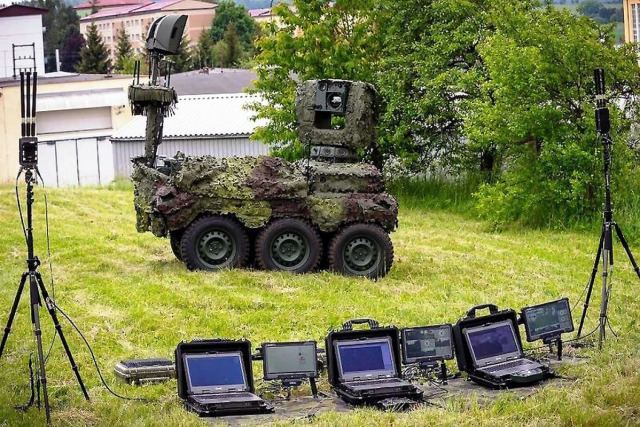At the forum of the Forces of the Future (Future Forces Forum) held in Prague in mid-October 2022, the local manufacturer of ground systems, VOP CZ, presented unmanned ground vehicles (UGVs) of its own design. It is reported that some of them will enter service with the Czech army in the near future, while others are only in the design stage.
CZ started manufacturing ground-based robotic systems in 2013. Previously, the company participated in such production programs as the supply of 107 Pandur II 8x8 armored personnel carriers, 300 armored cabins for Ajban wheeled combat vehicles on behalf of the UAE Nimr, as well as in modernization programs for T-72M4-CZ and T-55 main battle tanks.
The UGV family developed by VOP CZ is called TAROS (abbreviation of TActical RObotic System) and combines a number of platforms, the last of which was handed over to the Czech army for testing in mid-2020 and is currently to be produced by the Czech military company VTÚ.
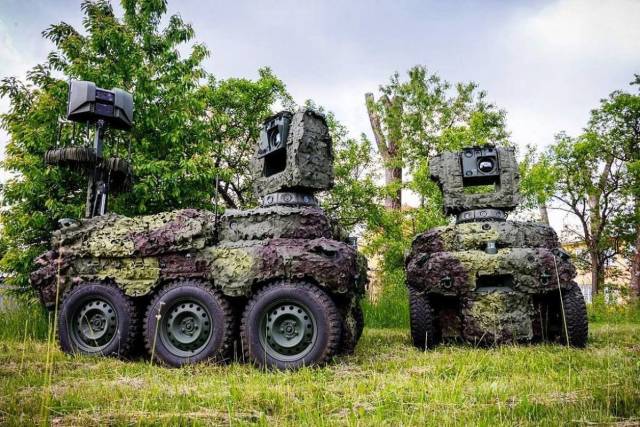
UGV-Pz Reconnaissance Ground droneThe first model is a reconnaissance robotic complex UGV–Pz with dimensions of 2.4×1.7×2.3 m with a package of sensors on a 6×6 chassis, designed to equip various sets of reconnaissance equipment.
The maximum speed on rough terrain is 15 km/ h, and the power reserve on the road exceeds 20 km. It can overcome a slope of 30% and the same angle of lateral inclination.
The specially designed superstructure contains a Thales Squire battlefield surveillance radar on a telescopic mast, and an optoelectronic unit equipped with a swivel head that provides a full 360° rotation and an angle of inclination from - 25° to + 65°. The optical package includes a daytime television camera with a wide (59° x 46°) and narrow field of view (2.2° x 1.6°), as well as an uncooled thermal imaging camera with a viewing angle from 35° x 27° to 4.4° x 3.3°. A laser rangefinder with a range of 80-20,000 m and a laser marker with a range of 15 km are also installed.
The data transmission channel between UGV-Pz and the control station provides control of the drone at a distance of 3-5 km. The total mass of the system is 1870 kg. Like all TAROS SUVs, the UGV-Pz is equipped with independent steering wheels, which, in addition to the usual movement, provide a circular U-turn, lateral crab movement, and a reduced turning radius. The robot's drive is fully electric, the batteries provide not only power to the independent electric motors of the wheels, but also a long operating time of the sensor unit.
Currently, UGV-Pz is equipped with an autonomy package that allows it to move independently in various modes: "follow me", "obstacle detection and detour", "route movement". Other modes are under development, for example, static and dynamic patrolling.
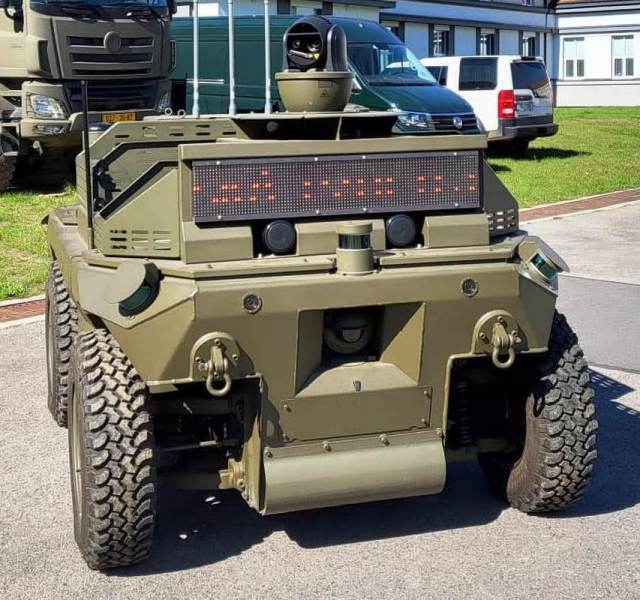 |
| The UGV SOM 6 model. |
| Source: invoen.ru |
Another robotic complex developed according to the requirements of the Czech Army is UGV SOM 6 (from Systém Ochrany a Monitorování, or "protection and monitoring system"). The device is also based on the TAROS family, but has a 4×4 configuration. It is equipped with volumetric lidars, which provide a certain degree of autonomy, allowing UGV not only to avoid obstacles, but also to detect intruders within a controlled perimeter.
An optoelectronic package with day/night vision cameras provides identification capability, while a two-way audio communication system allows you to listen for any suspicious noise and eventually send warning messages.
It is reported that SOM 6 is already used by military police units responsible for the security of facilities, which reduces the number of personnel required to perform such a task. To increase the range of travel, a hybrid powerplant was selected. On-board diesel generator allows you to charge batteries.
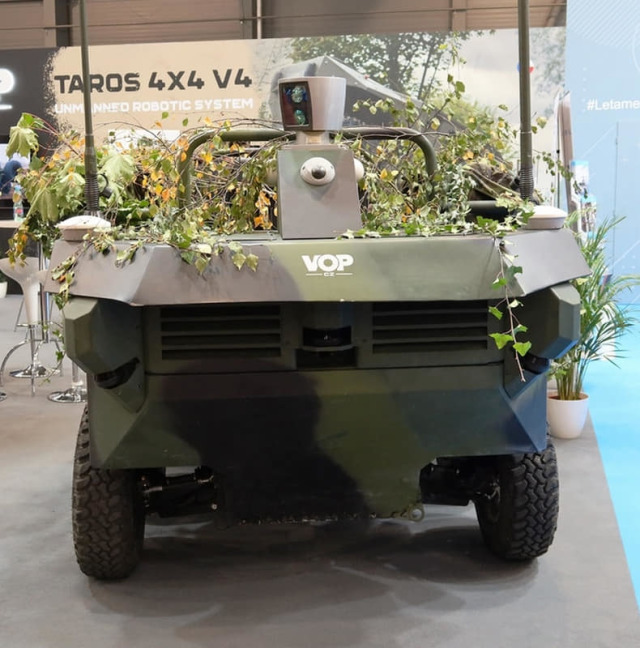
TAROS V4 Robotics ComplexPresented at the forum of future Forces, TAROS V2 is a demonstrator based on a modular concept that allows you to change its configuration from 4×4 to 8×8. However, the main model was the new TAROS V4, the fourth iteration of UGV, developed by VOP CZ.
Compared to the V3 variant, improvements have been made to the power and drive systems of the model, as well as to the logic that provides autonomous movement. New, more efficient batteries have been installed, which, together with a modified power management system, allow using fewer batteries to increase the range.
The TAROS V4 self-driving car is based on the company's specifications, taking into account current trends and with the prospect of developing a platform focused on a broader export market. The model has dimensions of 2,83x1,78x1,85 m. The combat weight of the robot is 1850 kg, of which 350 kg account for the payload.
The maximum speed on a paved road is 15 km/h, on the ground – 10 km/h. On rough terrain and/or offline, the speed drops to 1-5 km/h. The 341 Ah battery provides a power reserve of 40 km. The serial hybrid configuration with a diesel generator used to recharge the battery allows you to significantly increase this figure.
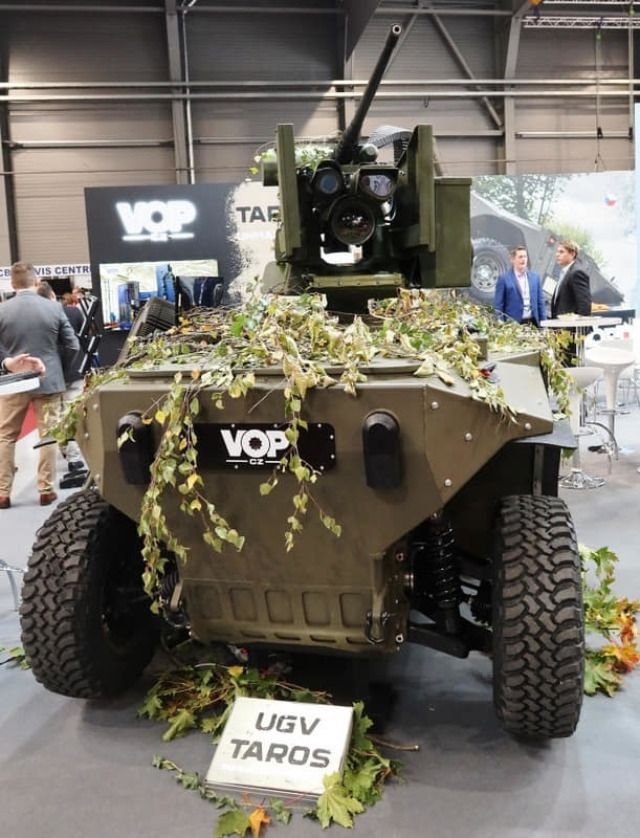
TAROS V4 model with weapon stationAt the forum of future forces, TAROS V4 was demonstrated, equipped with a remotely controlled weapon station with a 12.7 mm machine gun.
The available brochure described a version of a counter-UAV with ReGuard 3D radar developed by Retia. The X-band radar with AFAR is capable of detecting UAVs with a radar cross-section of 0.01 sq.m at a range of 6.5 km, with a cross–section of 0.1 sq.m - 11 km, an aircraft with a cross-section of 1 sq.m - at a range of 18 km and an altitude of up to 3000 m.
The radar weighs 66 kg. The antenna has a width of 0.65 m, a height of 0.75 m and a thickness of 0.235 m, which makes it easy to integrate it into a UGV similar to TAROS V4. According to the manufacturer, currently the design of the platform is fully completed, and the standalone package is close to completion. The system will be ready for presentation to potential customers in early 2023.
According to experts, the samples presented at the exhibition are not the last step in the development of the TAROS family. A new model, presumably V6, is already in development.
Based on the materials of the resource edrmagazine.eu
